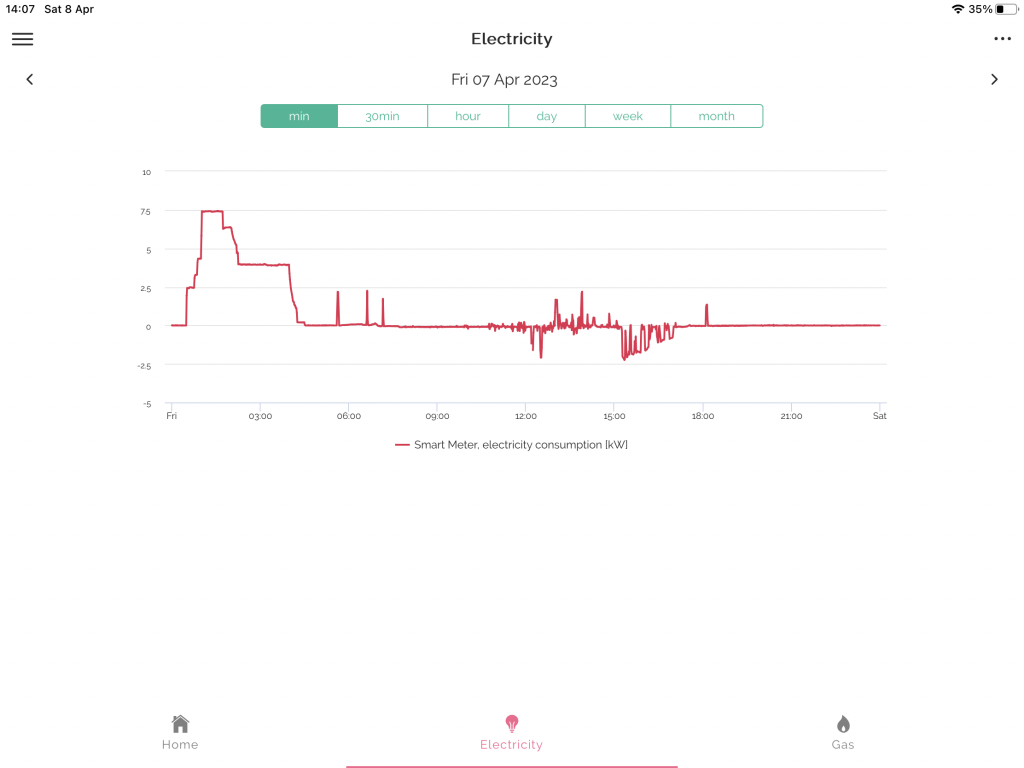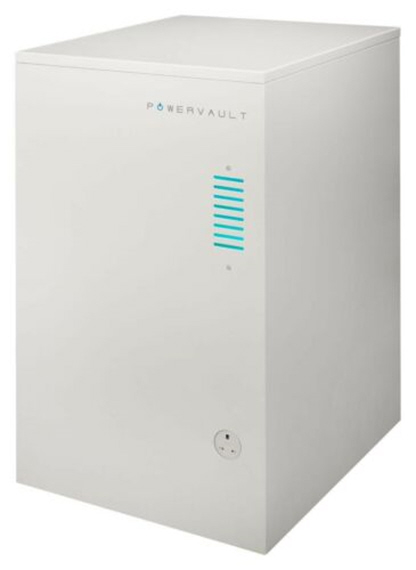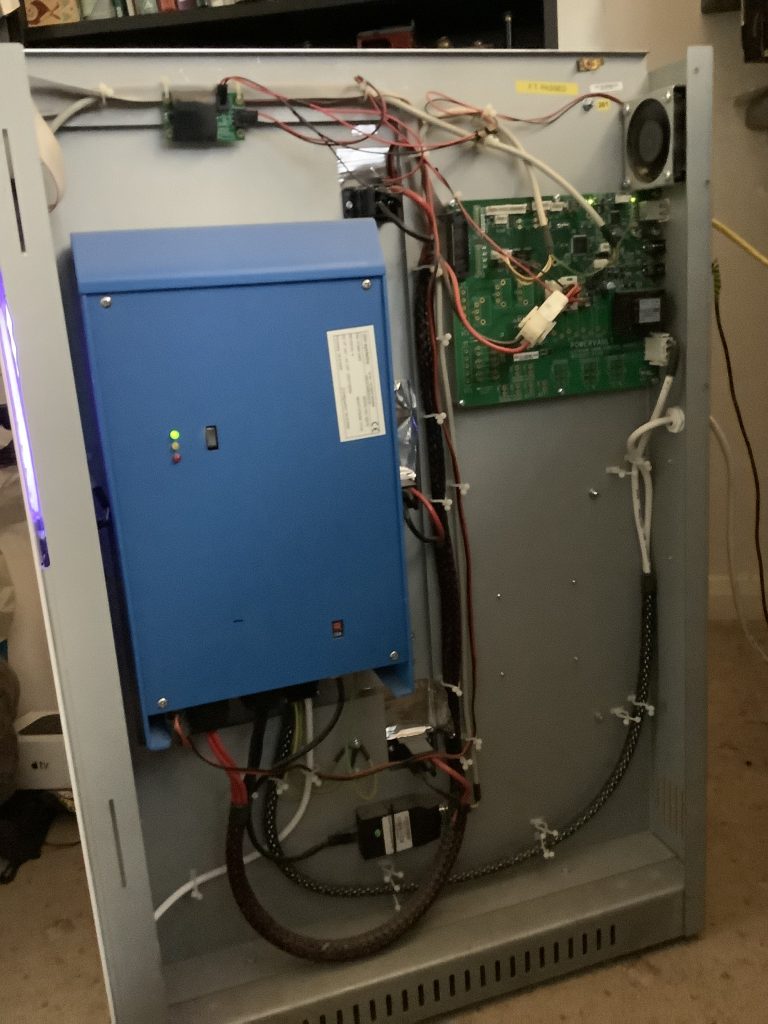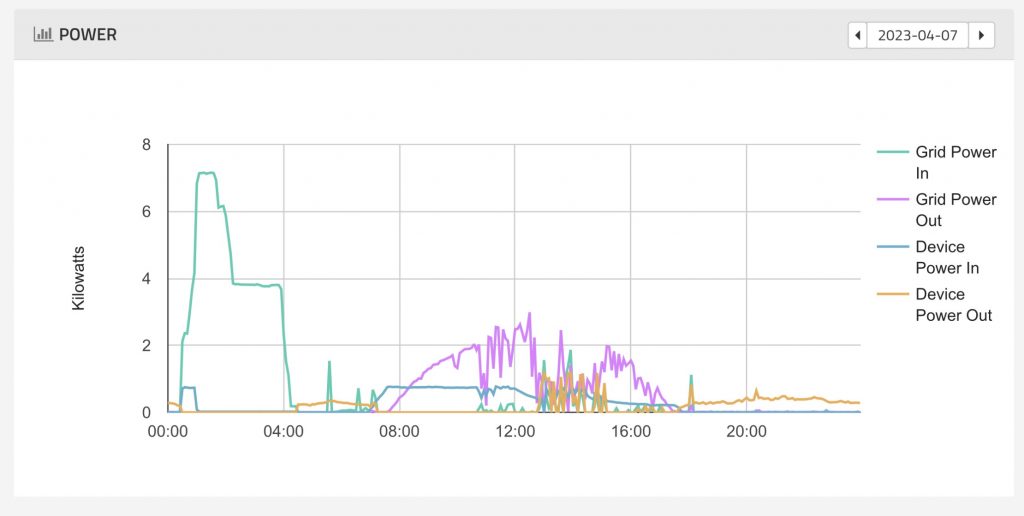Last December I wrote of reviving my Powervault home storage battery with new internal batteries. However subsequently I decided that my old batteries were worth more to me for their remaining storage capacity than they were to me as scrap, and instead I would try to use both my old and new batteries.
I knew that there wasn’t space inside the case for two sets of batteries so I planned to add the additional batteries in a separate rack outside the standard case.
I decided to explore the right hand side of the Powervault where the controls reside. The picture shows a large blue box which is the inverter/charger and handles the conversion of AC to DC to charge the battery, and DC to AC to discharge the battery. The open green circuit board to the right controls the inverter/charger and connects it to the internet for monitoring and control. Down the middle is an umbilical that connects the batteries (on the reverse side of the panel) to the inverter/charger. Each pair of batteries on a shelf is connected separately to the inverter/charger.
I fairly rapidly determined that there wasn’t space to add additional battery cables to the inverter/charger so instead I added two terminal blocks (see right) in the free space to the right, moved the existing battery cables from the inverter/charger to the blocks, and then added new cables from the blocks to the inverter. At this point the system was checked to ensure that all was working correctly.
I then added two DC cables from the blocks, through a suitable fuse, and through new cable glands to the external batteries.
All the additional parts including batteries, blocks, cables, fuse and glands are intended for similar battery storage applications in boats or caravans.

The results of this are that the battery continues to function correctly supporting the needs of the house. The above graphs, from Powervault and smart meter respectively, show:
- 00:00 to 00:30 – home still running on stored energy from yesterday having already run through yesterday evening on stored energy.
- 00:30 to 01:00 – battery charges for half an hour on cheap rate power (7.5 p/kWh) as HEMS predicts that today may not be sunny enough to fully charge the battery.
- 01:00 to 04:30 – battery idle while other household loads charge from cheap power.
- 04:30 to 07:00 – house runs from stored energy until sun comes up.
- 07:00 to 18:00 – house running from solar with battery charging, car charging and water heating at times from solar. Some export from 15:00 as all storage devices (battery, car and water cylinder are fully charged).
- 18:00 to 00:00 – home runs from battery.
Through the day the battery supported the house to the tune of 5.18 kWh and then the next day for 30 minutes until the cheap rate started. The Powervault had notionally 4 kWh usable capacity as supplied, although theoretical capacity was higher (3 x 120 Ah x 24 Volts = 8.64 kWh). Theoretical capacity is higher now, but I suspect that the control board continues to limit the usable capacity. A low ratio of usable capacity to theoretical capacity should be good for battery longevity as depth of discharge is limited. The older batteries have now been in use for over six years, although they have only been supported by the newer batteries for a couple of months.





